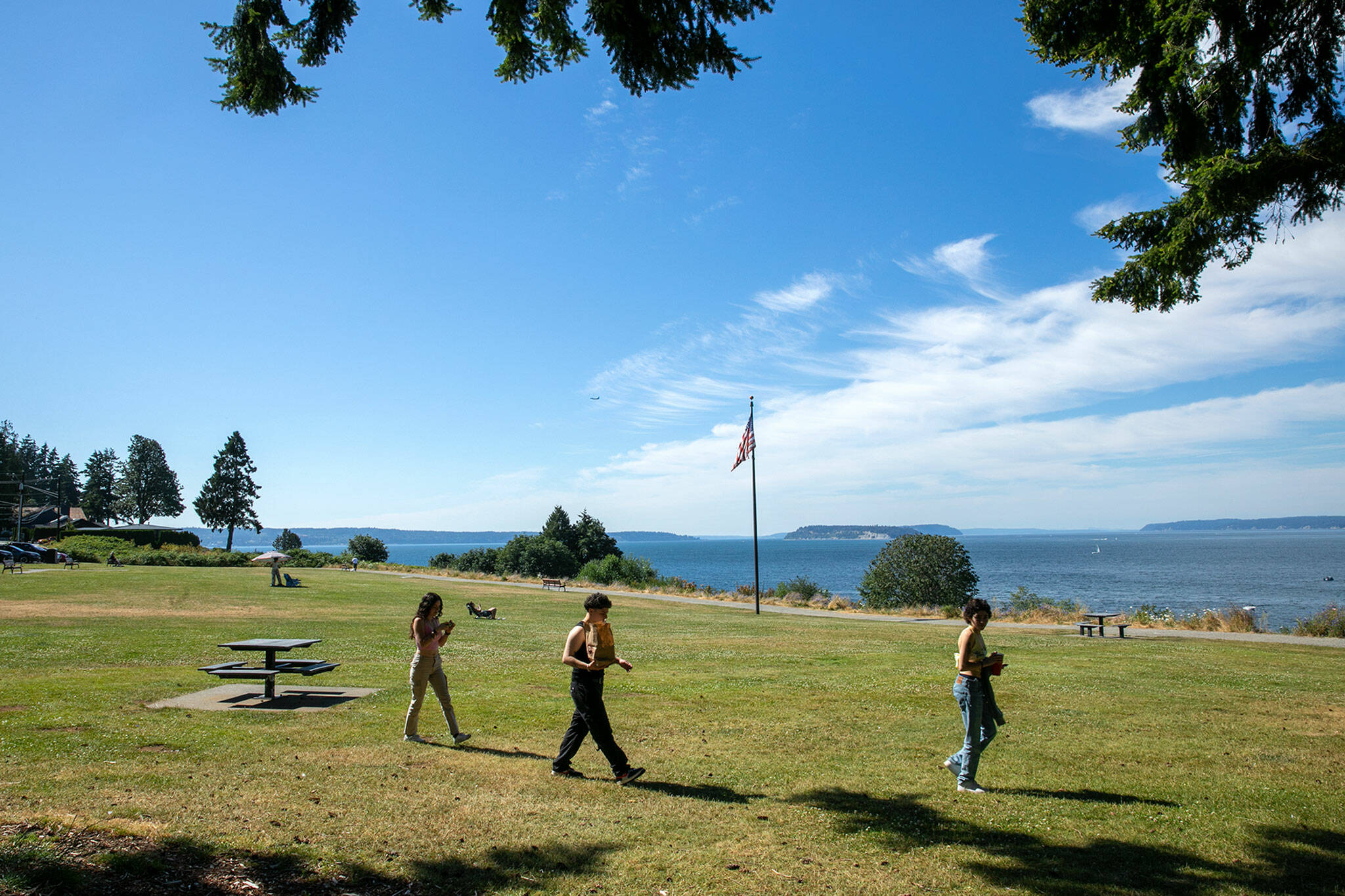EVERETT — Imagine, for a moment, a thriving city tucked between downtown Everett and Mukilteo.
In place of the open lawn at Harborview Park, envision rows of houses and a grid of streets named after figures from the Confederate South.
This could have been reality had Jacob Livingston realized his plans to build “Western New York,” a township proposed by the entrepreneur in 1872.
Though the plans never came to fruition, they are recorded on the first pages of the first book of Snohomish County deed records that recently returned to the county’s possession. A history of the Livingston brothers compiled by the late local historian David Dilgard adds some detail about why the town never came to be.
“This whole area is kind of full of places like that, where there was a great idea that didn’t quite get off the ground,” said Lisa Labovitch, Dilgard’s successor as history specialist with the Everett Public Library. “There are other places that were a town for a minute, and then disappeared when their post office disappeared. There are a lot of phantom map points. It’s cool that (record) book has resurfaced, because it’s a reminder of those stories.”
Livingston was a pioneer to Washington, moving west from his childhood home in Pennsylvania, according to Dilgard’s research. He left the east to seek gold in California. He arrived in the Puget Sound region around the same time the Civil War began.
He and his brother David formed the Snohomish Mills company in 1862. The next year, they mortgaged the land to another man who built a sawmill on the site. It was the county’s first steam-powered mill, according to Dilgard’s research.
The brothers’ hopes of becoming profitable lumber barons fell short, largely due to competition from bigger, more established mills in the region. In 1865, after their main trade ship was apparently damaged and lost its cargo near Cape Flattery, the Livingstons threw in the towel.
The business closed, and it appears David left the county. Jacob stayed, eventually getting a title to a portion of the land where the mill had been. In 1872, he platted it as Western New York, the first townsite planned along Port Gardner Bay — almost two decades before lumber speculators from the East Coast began clearing land for a new city called Everett on a nearby peninsula in 1890.
Livingston planned to sell nearly 100 plots, each about 5,500 square feet, per the hand-drawn plat map included in the deed records book. Clean lines and flowing calligraphy outline Livingston’s vision.
“Obviously favoring a generous reconciliation with the South, Jacob named his streets after Robert E. Lee, Stonewall Jackson and presidential candidate Horace Greeley, whose platform was most conciliatory toward the defeated Confederates,” Dilgard writes. “The gully on the eastern edge of the plat was called Livingston Street.”
Only two plots sold. Dilgard guessed the Panic of 1873 — a significant European stock market crash that led many businessmen to sell off investments in American projects — was key to Western New York’s demise.
Even if people had purchased plots and the economy had held out, Livingston’s city may have struggled. The site was hard to access. Hills, valleys, gullies and shoreline impeded travel between Mukilteo and Everett for decades. It took nearly 50 years to build Mukilteo Boulevard, which opened in 1914 and borders the modern-day park.
White settlers arrived slowly, then all at once.
South in Mukilteo, pioneer Morris Frost landed around 1860. He planned to plat his property for a townsite, but his idea never happened. The town lacked rail and road access.
Frost died in 1882, and it took almost a decade before another townsite plan was filed by Louis Kossuth Church, this time bolstered by rail service that came to Mukilteo in 1891.
The Livingston land ultimately fell into Burlington Northern Santa Fe Railway ownership. In the 1960s, the company began leasing a portion of the property to the the City of Everett to use as Harborview Park.
“I love that park. It’s a cool place to go read a book,” Labovitch said. “It’s a big open space that’s in the middle of a densely packed residential area … and now to know it was supposed to be a city named after one of the most densely populated areas of the land is really interesting.”
It’s the antithesis of Livingston’s vision, Labovitch said, but the story gives park visitors more context about the place they call home.
“Everett attracted a lot of people with really, really big ideas. … It was such a crazy boom-bust kind of place, where you could possibly achieve building up a place like Western New York, but maybe it went bust” for some economic reason like a bum trade boat, Labovitch said.
“I think walking through a landscape where you know a bit more about the history makes you think a lot more,” she said. “It changes your experience.”
Mallory Gruben is a Report for America corps member who writes about education for The Daily Herald.
Mallory Gruben: 425-339-3035; mallory.gruben@heraldnet.com; Twitter: @MalloryGruben.
Talk to us
> Give us your news tips.
> Send us a letter to the editor.
> More Herald contact information.

























